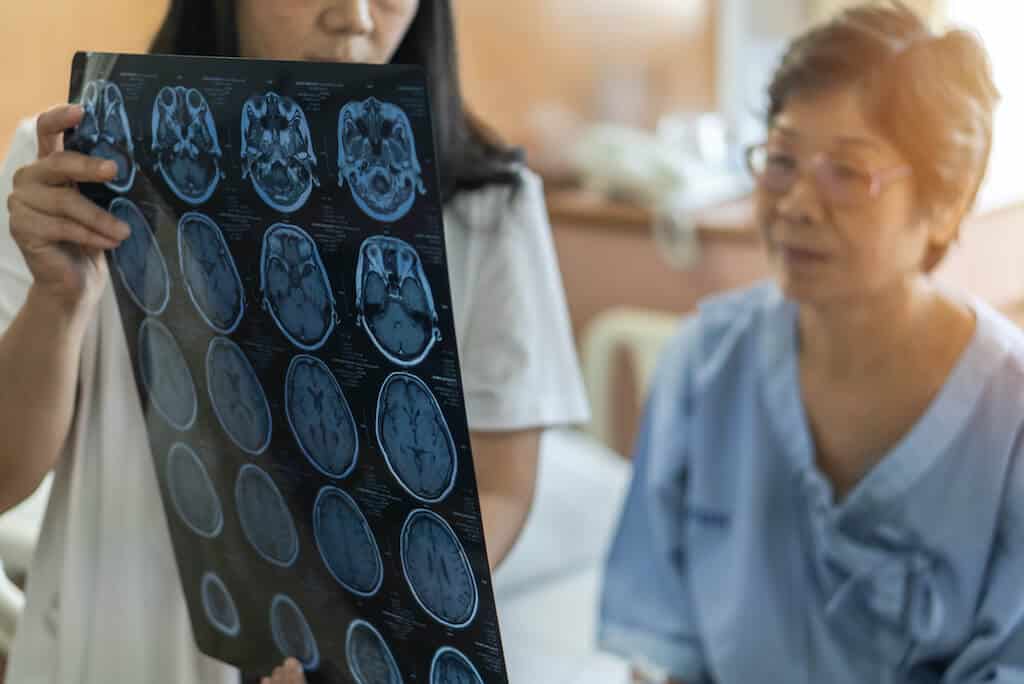
Stroke is the fifth-leading cause of death in the United States, and a leading cause of disability. According to CDC estimates, someone in the U.S. has a stroke every 40 seconds. Ischemic strokes occur when the blood supply to the brain is interrupted or reduced by a blockage, while hemorrhagic strokes occur when a blood vessel in the brain bursts. The majority (87%) are ischemic strokes.
While many people might be familiar with the term stroke, few recognize the term aphasia — a condition caused by strokes. Aphasia and strokes go hand in hand, as roughly one-third of people who have strokes get aphasia. While aphasia following a stroke isn’t preventable, the risk of stroke can be significantly reduced. Below, we’ll cover some key recommendations on stroke prevention.
1. Manage Your Blood Pressure
High blood pressure (hypertension) is a leading cause of stroke, and 45% of Americans have hypertension or take medication for it. It is a substantial risk factor, so it should be monitored for stroke prevention, and treated if elevated. Common ways to reduce blood pressure include reducing salt intake, avoiding saturated fats, exercising regularly, and quitting smoking. Make sure you talk to your doctor about your blood pressure and steps you might need to take.
2. Choose a Healthy Diet
A healthy diet offers a number of benefits, including a lower risk of suffering a stroke. The CDC recommends eating plenty of fresh vegetables and fruits, while avoiding foods that are high in saturated fats, trans fat, and cholesterol. As mentioned earlier, foods that are high in salt can affect your blood pressure, which could increase your chances of having a stroke.
3. Get Physical
Regular physical activity also provides several benefits while reducing the risk of stroke. It can help you maintain a healthy weight while lowering your blood pressure and cholesterol levels. For adults, the Surgeon General recommends two and a half hours of exercise per week of moderate intensity. A brisk walk is a great place to start with exercise.
4. No Smoking
Smoking harms nearly every organ of the body, and leads to disease and disability. Smoking increases the chances of having a stroke significantly. If you smoke, it’s not too late to lower your risk of stroke by quitting. And if you don’t smoke, don’t start.
5. Avoid or Limit Alcohol Intake
Drinking alcohol can be detrimental to your health. Long-term health risks of excessive alcohol intake include high blood pressure, heart disease, liver disease, and stroke. The Dietary Guidelines for Americans recommends nondrinking or drinking in moderation, which is defined as 2 drinks or less per day for men, or 1 drink or less per day for women.
6. Treat Diabetes
Approximately 1 in 10 Americans have diabetes, and millions have not yet been diagnosed. Diabetes is associated with many serious complications, including stroke. High blood sugar damages blood vessels, which makes them more susceptible to clots forming. If you have diabetes, it’s important to monitor and manage your blood sugar as directed by your doctor.
Stroke is a serious medical condition. If you or someone you’re with shows signs of a stroke, call 9-1-1 immediately. Every minute counts.
About Contributor
Lingraphica helps people with speech and language impairments improve their communication, speech, and quality of life. Try a Lingraphica AAC device for free.













